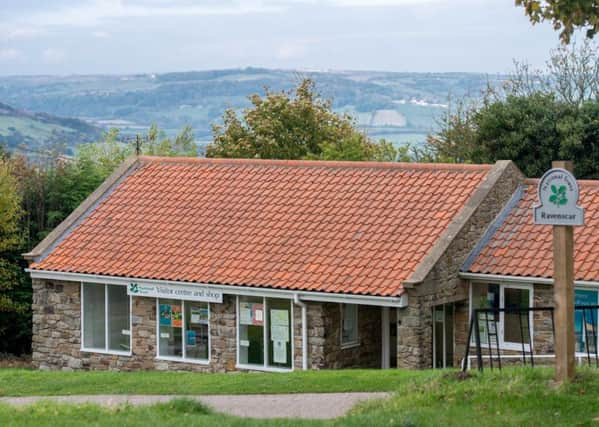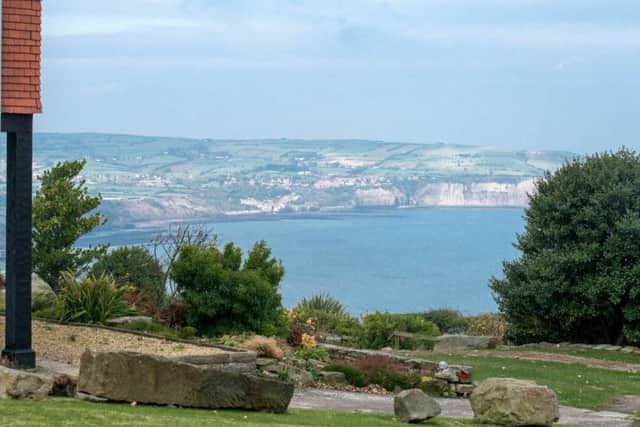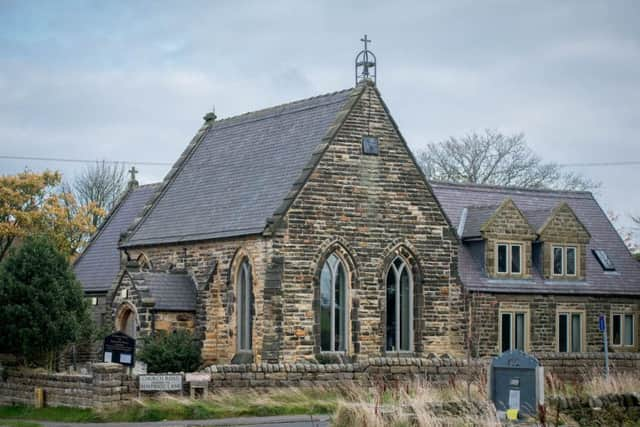Glorious sea views from the clifftop town that never was


The mix of rural and maritime views and the sheer quaintness of a 279-yard tunnel at Ravenscar would surely guarantee its success.
That tunnel was commissioned by one WH Hammond, chairman of the NE Railway Company, because he thought the spectacle of the train crossing his land would mar the view.
Advertisement
Hide AdAdvertisement
Hide AdQuite how Hammond came to be the owner of the land is a fascinating and convoluted tale. Richard Child Willis (1799-1877) inherited Peak House (later named Raven Hall) from his mother, Ann, who did everything legal to prevent her son, a known spendthrift, from squandering his inheritance.


Alas, after her death in 1835 Richard spent huge sums of money raised from the Chapman Simpson Bank in Whitby on the building and gardens.
In 1841 the bank foreclosed on the mortgage (Richard was a gambler and a ruthless spender of money he did not have) and brought in William Henry Hammond, a London auctioneer, to oversee the sale.
Hammond liked what he saw and ended up buying it, so there is nothing in the local legend that he won it from Willis in a bet involving two wood lice crossing a saucer!
Advertisement
Hide AdAdvertisement
Hide AdThe just over 300 residents of Ravenscar enjoy the finest views in the Scarborough area.


It’s hardly surprising that the village (called Peak until 1897) is one of the healthiest places to live in the UK, given its bracing climate and absence of heavy industry.
It hasn’t always been so. In 1640, two large quarries were created when Sir Bryan Cooke discovered alum-bearing shale rock in the hillside to the north and founded an industry that was to last 220 years.
It was a valuable constituent in the textile and tanning businesses as well as having its uses in medicine (it stopped bleeding and cured chilblains).
Advertisement
Hide AdAdvertisement
Hide AdThe twist was importing urine from London by sea as part of the crystallisation process.


Such was the value of alum by the 1800s that Dutch, French and Spanish pirates tried to steal it.
A cannon was placed on the clifftop to overlook the small harbour and a small platoon of redcoats was stationed at nearby Robin Hood’s Bay.
The Whitaker Brick Company, which was based in an Alum quarry, started to produce Ravenscar bricks in 1900. It made the bricks for the Northstead housing estate and the Odeon theatre (now the Stephen Joseph Theatre).
Advertisement
Hide AdAdvertisement
Hide AdIt ceased production during the war years because the furnaces made a mark for enemy planes at night.


Sixty years after being built, the two huge chimneys were demolished. It’s now the property of the National Trust.
There’s not much left these days excepting a rumour about a secret jet mine, but everyone’s lips are sealed as to its location!
Upon the death of Mr Hammond’s wife in 1895 the estate was sold to the Ravenscar Estate Company for £10,000; the hall and grounds were sold separately for hotel development. Three-hundred men were immediately employed to lay drains, construct roads, create gardens and engineer a path down to the beach in a serious attempt to turn Peak into a rival resort to Scarborough and Whitby.
Advertisement
Hide AdAdvertisement
Hide AdThe last 30 feet of the path was detonated during the Second World War to halt any German invasion force!
On October 18, 1897, Peak became Ravenscar and trains were commissioned from the north and midlands to bring potential purchasers of over 1,000 plots on the new estate to an auction.
The sales brochure told of terraces, hanging gardens and turnstiled promenade walks.
In 1909, complaining that too much had been spent on infrastructure, the debenture holders called in the receiver. So it was that the punters turned tail and Ravenscar became a stunning village instead of a thriving resort.
Advertisement
Hide AdAdvertisement
Hide AdThe Ravenscar Estate Company went into liquidation and in 1977 the National Trust bought the remnants, with the records lodged with North Yorkshire County Council.
Simon Rhodes’s booklet ‘Ravenscar – the town that never was’ tells of two walks that explore the layout of the proposed town.
Just a hundred yards from the National Trust Coastal Centre, the modern day visitor can discover the sealed end of the railway tunnel which is accessed through a normal front door, like something out of Narnia.
St Hilda’s Church, built in 1852 by Mr Hammond as a non-denominational place of worship, is Church of England these days and is overseen by Alistair Fearnley, who combines it with Scalby as part of an ecumenical partnership with the Methodists.
Advertisement
Hide AdAdvertisement
Hide AdDuring Graham Taylor’s spell as vicar (he is now the writer GP Taylor) he developed the Ingrid Flute gallery by refurbishing the room behind the church.
Nowadays quite avant garde art exhibitions involving guest artists are held there as well as regular meetings of a craft group.
Raven Hall Hotel is probably the village’s finest building, a thriving hotel under the ownership of Epworth, a consortium of Methodist churches, and is used for conferences and weddings.
There is a tea room on Station Square, but shop and pub-wise, the last fully commercial premises closed in 1993.
Advertisement
Hide AdAdvertisement
Hide AdHowever, there is a satellite post office operating Monday to Friday, 9am to 11am, in Jenny Bartlet’s front room, with a trust shop in the porch that operates seven days a week.
Look for the house name ‘Dunelm’ on Ravenhall Road where Frank James will be pleased to serve you! Burniston is the nearest to Ravenscar for shops.
Today ‘tiny’ Ravenscar runs three cricket teams in the Derwent, Beckett and Evening Leagues (some achievement). In 1948/49 it fielded a team with ten of the players bearing the name Robinson.
The annual horse show (held on September 10 this year) takes place at Bent Rigg Farm, organised by Anthony White and friends of the late Pam Coates.
Advertisement
Hide AdAdvertisement
Hide AdStaintondale School, which catered for Ravenscar children, closed in the 1970s while Ravenscar village school itself closed in May 1953. These days, primary children mostly attend Lindhead in Burniston with secondary pupils opting for Scalby Secondary.
Ravenscar is full of anomalies and eccentricities but its views are breathtaking.
When there is a sea fret shrouding places nearby, Ravenscar is often in glorious sunshine and one can look down on Robin Hood’s Bay to see the mist lying like a thick layer of cotton wool.
l My thanks to Val Russell and Mike Lester for providing me with valuable information.